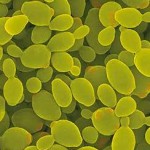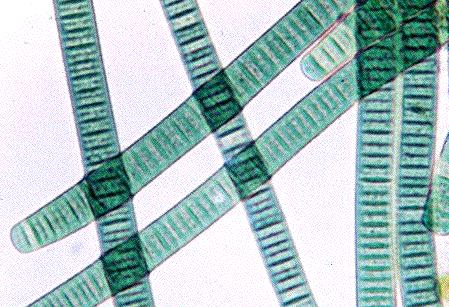Team:Georgia State/Project
From 2010.igem.org
Zacstewart (Talk | contribs) (→Production of Herpes Symplex B Virus Antigen in Pichia Pastoris) |
Zacstewart (Talk | contribs) (→Degradation of Toluene using Genetically Engineered Cyanobacteria) |
||
| Line 7: | Line 7: | ||
==Degradation of Toluene using Genetically Engineered Cyanobacteria== | ==Degradation of Toluene using Genetically Engineered Cyanobacteria== | ||
| - | The recent oil spill in the Gulf of Mexico presents significant pressure to develop new bioremediation technologies. Contamination of sensitive environments can often have devastating ecological and economical repercussions. Monoaromatic compounds such as Benzene, Toluene, Ethyl benzene, and Xylene (BTEX), are particularly toxic and present in industrial products like crude oil and paint thinners. Although there are microorganisms capable of degrading BTEX, they are not always optimal for bioremediation in certain environments. It would be ideal to transform these enzymatic functions into organisms better suited for such conditions. | + | [[Image:Cyanobacteria.jpg|left]]The recent oil spill in the Gulf of Mexico presents significant pressure to develop new bioremediation technologies. Contamination of sensitive environments can often have devastating ecological and economical repercussions. Monoaromatic compounds such as Benzene, Toluene, Ethyl benzene, and Xylene (BTEX), are particularly toxic and present in industrial products like crude oil and paint thinners. Although there are microorganisms capable of degrading BTEX, they are not always optimal for bioremediation in certain environments. It would be ideal to transform these enzymatic functions into organisms better suited for such conditions. |
We propose to utilize Cyanobacteria as a model organism to host a toluene degradation plasmid and contribute to the bioremediation of marine oil spills. High cell densities of Cyanobacteria are found in many of the world’s oceans, and their unique oxygenic ability is useful in the hypoxic environment of an oil spill. The plasmid will be constructed primarily from parts built from the Pseudomonas putida TOL plasmid. Engineered Cyanobacteria could serve as an effective and environmentally-conscious treatment for oil spill contamination. | We propose to utilize Cyanobacteria as a model organism to host a toluene degradation plasmid and contribute to the bioremediation of marine oil spills. High cell densities of Cyanobacteria are found in many of the world’s oceans, and their unique oxygenic ability is useful in the hypoxic environment of an oil spill. The plasmid will be constructed primarily from parts built from the Pseudomonas putida TOL plasmid. Engineered Cyanobacteria could serve as an effective and environmentally-conscious treatment for oil spill contamination. | ||
| + | |||
{{Georgia_State/Footer}} | {{Georgia_State/Footer}} | ||
Revision as of 16:44, 26 July 2010

Over the past month, the team has worked diligently in preparing P. pastoris and Cyanobacteria competency, transforming DNA BioBrick parts, and optimizing growth conditions for future transformations. In addition, the group convened for the first annual GSU iGEM Boot Camp to work on team building, understanding the basic concepts, and organizing public relations.
Production of Herpes Symplex B Virus Antigen in Pichia Pastoris
Pichia pastoris is a yeast used as an alternative host for protein production in addition to Escherichia coli and Saccharomyces cerevisiae. The use of P. pastoris is advantageous because it can be easily grown, and it can introduce eukaryotic post-translational modifications. In addition, P. pastoris recombinant protein yields are very high (Cereghino and Cregg, 2000). The team’s goal is to create a part that encodes for Herpes Symplex B antigen and a flagellin part that aids in its immunogenicity. Together, these parts will be transformed into the yeast for post-translational modification and mass production for vaccine development.Degradation of Toluene using Genetically Engineered Cyanobacteria
The recent oil spill in the Gulf of Mexico presents significant pressure to develop new bioremediation technologies. Contamination of sensitive environments can often have devastating ecological and economical repercussions. Monoaromatic compounds such as Benzene, Toluene, Ethyl benzene, and Xylene (BTEX), are particularly toxic and present in industrial products like crude oil and paint thinners. Although there are microorganisms capable of degrading BTEX, they are not always optimal for bioremediation in certain environments. It would be ideal to transform these enzymatic functions into organisms better suited for such conditions.We propose to utilize Cyanobacteria as a model organism to host a toluene degradation plasmid and contribute to the bioremediation of marine oil spills. High cell densities of Cyanobacteria are found in many of the world’s oceans, and their unique oxygenic ability is useful in the hypoxic environment of an oil spill. The plasmid will be constructed primarily from parts built from the Pseudomonas putida TOL plasmid. Engineered Cyanobacteria could serve as an effective and environmentally-conscious treatment for oil spill contamination.
 "
"

